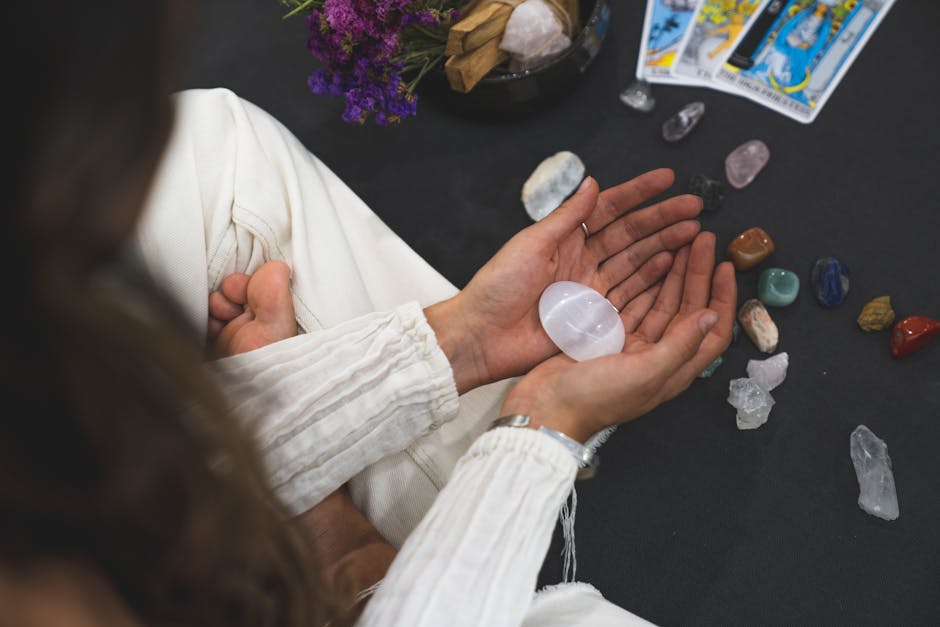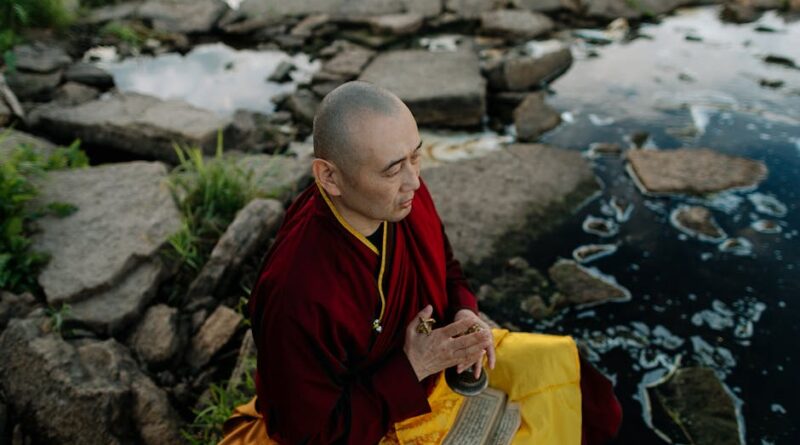Meditation Practices: Exploring the Depths of Inner Peace
Imagine a state of deep tranquility, where the mind is free from clutter, and the soul is at peace. This is the essence of meditation – a practice that has been revered for centuries as a powerful tool for self-discovery, emotional balance, and spiritual growth. In a world filled with chaos and distractions, meditation offers a sanctuary for the mind to rest and rejuvenate. But what exactly is meditation, and how can it benefit our lives? Join us on a journey through the realm of meditation practices, where we will unravel the mysteries and unveil the transformative power of this ancient art.
The Origins of Meditation

Before we delve into the intricacies of meditation practices, it is essential to understand its origins. Meditation traces its roots back to ancient civilizations such as India, China, and Egypt, where it was used as a spiritual practice to connect with the divine. The earliest documented records of meditation date back to around 1500 BCE in the Vedas, the sacred texts of Hinduism. Over time, meditation spread to other parts of the world, including Buddhist monasteries in the East and Christian mystics in the West.
One of the most influential figures in the history of meditation is Siddhartha Gautama, also known as the Buddha. It is said that after years of seeking enlightenment, the Buddha achieved a state of deep meditation under the Bodhi tree, where he experienced profound insights into the nature of existence. This event, known as the Buddha’s enlightenment, marked the beginning of the Buddhist tradition of meditation, which emphasizes mindfulness, compassion, and self-awareness.
The Science of Meditation

While meditation has deep spiritual roots, modern science has also taken a keen interest in its benefits for mental and physical well-being. Numerous studies have shown that regular meditation practice can reduce stress, anxiety, and depression, improve cognitive function, and enhance overall quality of life. One of the key mechanisms through which meditation exerts its effects is by calming the mind and activating the body’s relaxation response.
Brain imaging studies have revealed that meditation can lead to changes in the brain’s structure and function, particularly in areas associated with attention, emotion regulation, and self-awareness. For example, the prefrontal cortex, which is responsible for higher-order cognitive functions, shows increased activity during meditation, while the amygdala, which is involved in the processing of emotions, becomes less reactive. These neurobiological changes are thought to underlie the emotional resilience and mental clarity that meditators often experience.
Types of Meditation Practices

There are many different forms of meditation, each with its own unique techniques and goals. Some of the most popular types of meditation practices include:
Mindfulness Meditation
Mindfulness meditation involves paying attention to the present moment without judgment. Practitioners focus on their breath, bodily sensations, or thoughts, observing them as they arise and pass away. Mindfulness meditation is often used to cultivate awareness, acceptance, and emotional equilibrium.
Loving-Kindness Meditation
Loving-kindness meditation, also known as metta meditation, focuses on cultivating feelings of love, compassion, and goodwill towards oneself and others. Practitioners repeat phrases such as “May I be happy, may I be healthy, may I be safe, may I live with ease” while visualizing themselves and others bathed in loving-kindness.
Transcendental Meditation
Transcendental meditation is a technique that involves silently repeating a mantra, a word or phrase with special significance, to help quiet the mind and access deeper levels of consciousness. Advocates of transcendental meditation claim that it can lead to profound states of relaxation and self-awareness.
Guided Visualization
Guided visualization is a form of meditation that uses imagery and imagination to evoke positive emotions and outcomes. Practitioners may listen to a recording or script that guides them through a peaceful scene or scenario, helping them relax and focus their mind.
Body Scan Meditation
Body scan meditation involves systematically moving awareness through different parts of the body, focusing on sensations and releasing tension. This practice is often used to promote relaxation, mindfulness, and body awareness.
The Benefits of Meditation Practices

The benefits of meditation practices are vast and varied, encompassing physical, mental, emotional, and spiritual well-being. Some of the key benefits of meditation include:
Stress Reduction
One of the most well-documented benefits of meditation is its ability to reduce stress levels. By eliciting the relaxation response, meditation can lower cortisol levels, decrease blood pressure, and promote feelings of calm and tranquility.
Improved Focus and Concentration
Regular meditation practice has been shown to enhance cognitive functions such as attention, concentration, and memory. By training the mind to stay present and focused, meditation can improve productivity, creativity, and mental clarity.
Emotional Regulation
Meditation can help individuals regulate their emotions more effectively by increasing self-awareness and emotional resilience. By observing their thoughts and feelings without judgment, meditators can develop a greater sense of inner peace and emotional balance.
Enhanced Well-Being
Studies have also found that meditation practices can improve overall well-being and quality of life. By promoting a sense of connection, purpose, and gratitude, meditation can help individuals lead more fulfilling and meaningful lives.
Common Misconceptions About Meditation
Despite the growing popularity of meditation practices, there are still many misconceptions surrounding this ancient art. Let’s debunk some of the common myths and misunderstandings about meditation:
Meditation is only for spiritual people
While meditation has deep spiritual roots, it is not limited to religious or spiritual individuals. Anyone can benefit from meditation, regardless of their beliefs or background. Meditation is a secular practice that can be adapted to suit individual preferences and goals.
You have to sit cross-legged for hours to meditate
Contrary to popular belief, meditation does not require a specific posture or duration. You can meditate sitting, standing, walking, or lying down, depending on your comfort and mobility. Even just a few minutes of meditation each day can have significant benefits for your well-being.
FAQs About Meditation Practices
Q: How long does it take to see the benefits of meditation?
A: The benefits of meditation can vary from person to person, depending on factors such as consistency, technique, and individual differences. Some people may notice changes in their mood, stress levels, and overall well-being after just a few sessions, while others may take longer to experience tangible benefits.
Q: Can meditation cure mental health conditions?
A: While meditation can be a helpful tool for managing mental health conditions such as anxiety, depression, and PTSD, it is not a cure-all. It is essential to work with a qualified mental health professional to develop a comprehensive treatment plan that includes meditation as part of a holistic approach to wellness.
To Wrap Things Up
In conclusion, meditation practices offer a wealth of benefits for the mind, body, and spirit. By cultivating mindfulness, compassion, and self-awareness, meditation can help us navigate the complexities of modern life with grace and resilience. Whether you are a seasoned meditator or a curious beginner, exploring the depths of meditation can lead to profound insights, personal growth, and lasting peace. So why not take a few moments each day to sit quietly, breathe deeply, and connect with the present moment? The journey to inner peace begins with a single breath.




